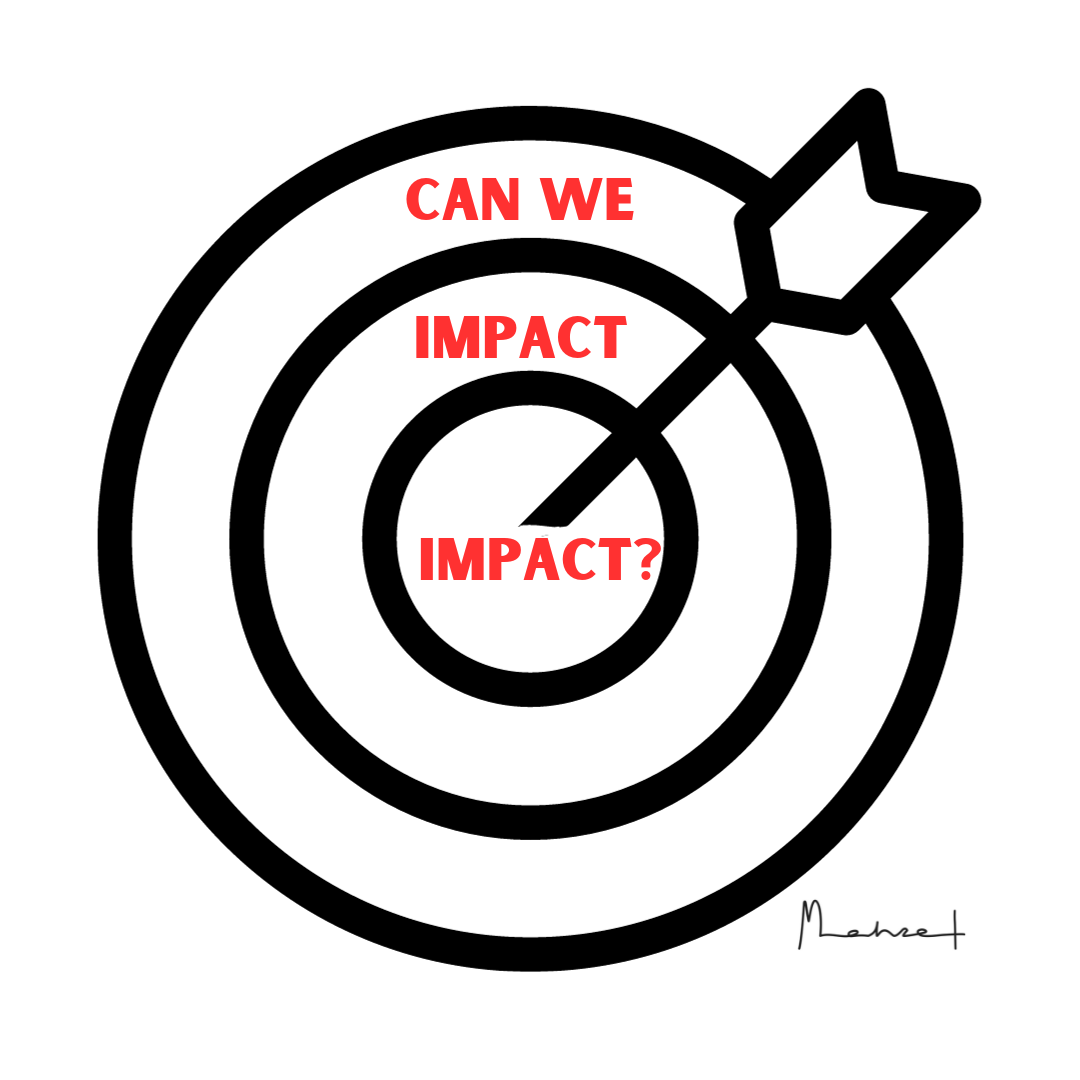The Evolution of Impact
Can we impact impact?
“Whenever you find yourself on the side of the majority, it is time to pause and reflect.” - Mark Twain
Last week I wrote about the third finding from The Fragile Real study, the observation that fiction operates as an archive to foretell freedom. This week I am writing about the fourth finding: the evolution of impact.
Many interviewees expressed a disillusionment with the way that impact is practiced and measured. This disillusionment is about wanting more honest ways to conceptualize impact, including being able to adapt it to the needs of various local contexts around the world. In short, the storytellers I interviewed wanted to approach impact with a wider set of options which I outline below.
Firstly, conventional approaches that use stories to create impact often rely on hyper-visible acts like public pitches and communication campaigns that function as public announcements to the world. However, in many of the contexts in which storytellers are working, the politics and issues of safety preclude these options. Instead, there are a range of actions “behind closed doors” that could potentially be far more effective in helping stories reach a deeper level of influence in their local contexts. These closed door methodologies also point to a broader line of inquiry about how stories function and work in different cultures and the possibility that what is most politically persuasive (read effective to the everyday person in the country of origin where the story originates) is to use the power of ambiguity in the ways Poletta et al. have described as a “resource” (2011). Drawing on this understanding, the visibility of public pitches and public pronouncements of what filmmakers intend to do with their films draw their power from an altogether different place and may in fact reproduce inequalities. As one of the interviewees put it, the need for impact to claim any credit is the same “back end thinking” to dominating forms of power and the very people seeking to create change may slip into reproducing violence if visibility is the only way to demonstrate impact.
Secondly, issues with measuring impact were raised. Makers discussed “vanity metrics”, and a focus on “output vs outcome” as problematic for the field because it was disconnected from actual change on the ground. One of the interviewees defined vanity metrics as: “measuring how many screenings are held or how many people come to a website tracks or how many people signed up for a newsletter.” The point is that these metrics track the efforts of the campaign, not whether or not these efforts changed an actual outcome. This incentivizes checking boxes that serve the needs of those measuring instead of centering the focus on the social circumstances that need to change in the lives of those most affected by the issues that are the target of the impact. Similar concerns about the limits of measurement raise the possibility that the long tail of the most important impacts may never be measured at all if they happen decades after. For example, interviewees talked about movies in their childhood that led to them doing what they are doing now and posed the question: “who is measuring that impact decades later? Does that mean it doesn’t count?” Storytellers would like to have the space to have more honest conversations with funders about these limitations and explore possible solutions.
Thirdly, interviewees expressed frustration at the reductive marketing equals impact logic in the film industry which prevents real change from happening. When large distributors and studios allocate marketing spend toward impact goals, and view impact as marketing, what happens is that the politics gets taken out. The impact campaigns are depoliticized in the hopes of reaching “broader audiences”. Stories like Just Mercy, which are overtly about race and criminal justice reform, become films about “hope and a hero”. The depoliticization of social issues is a byproduct of the way the industry operates and impact must evolve to keep this in sharp focus. Focusing on the conditions under which films are marketed is also an opportunity to center the practice of the industry itself as a new approach to evolving impact. This presents the possibility that the next evolution of impact lies in exploring the conditions under which stories get made and the industry itself.
Fourthly, the storytellers interviewed repeatedly point out that the most impactful stories are the ones that come from the communities themselves, unfiltered. Focusing on building the local capacity for stories to come from places where the storytelling infrastructure may be lacking requires an investment in people’s capacities to tell their own stories and that has been conventionally left out of the purview of impact. What would it look like to bring these capacities front and center in the evolution of impact? One of the makers raises this issue eloquently in his comments about a particularly powerful local Egyptian film. This film changed local laws but would have never gotten into a social impact forum because it looked very different from the internationally traveling stories that make it to global forums. He advised, “this should make us rethink what we are doing as it relates to impact.”
If the kinds of stories that local populations want to tell would never make it to an impact forum then perhaps the target of impact should be the people shaping it. The ultimate question may very well be: can we impact impact?



